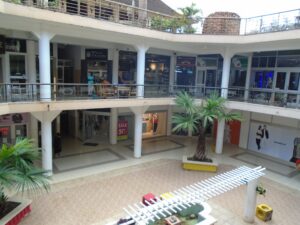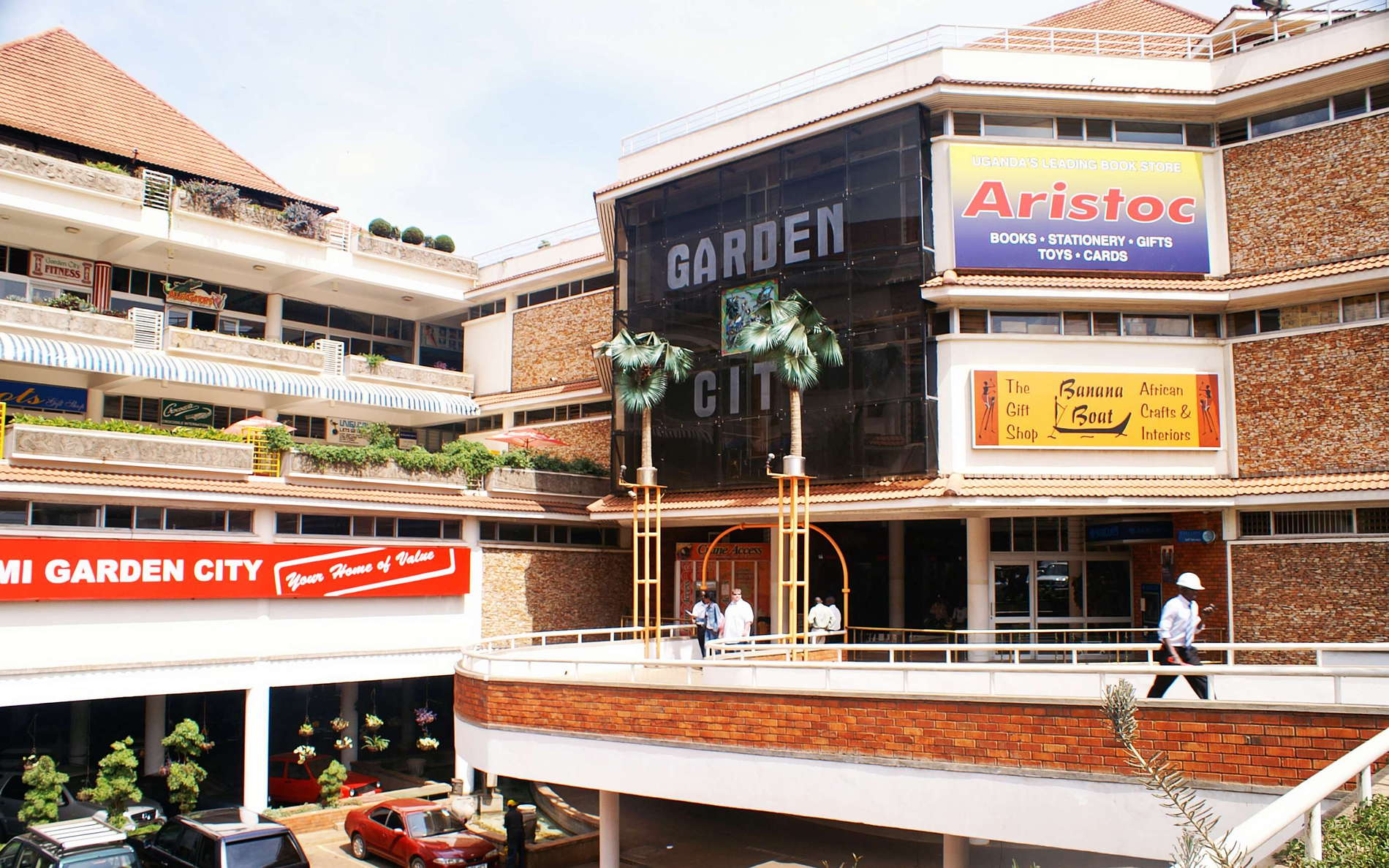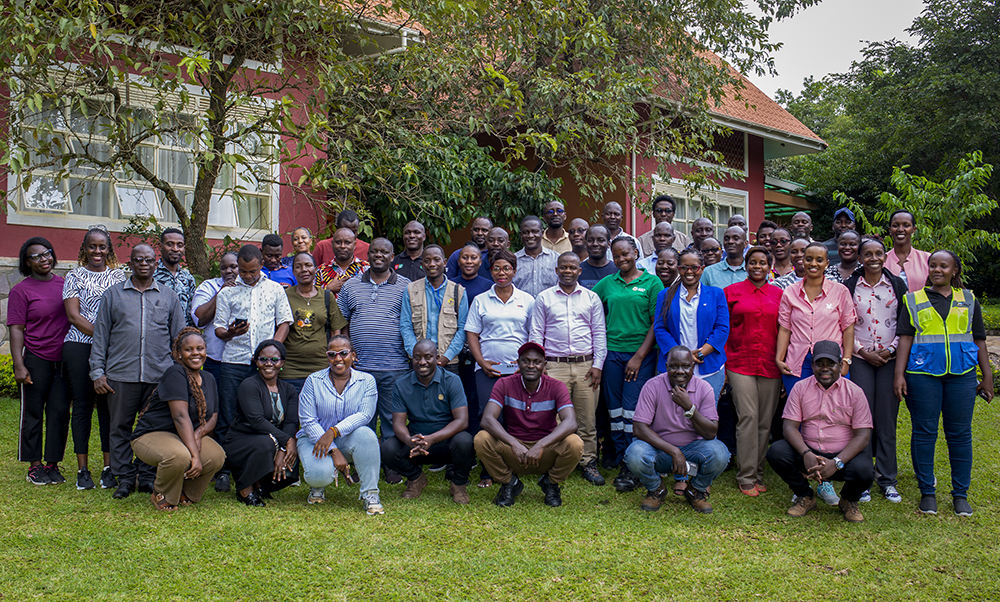In the early 2000s, Kampala’s Garden City Mall on Yusuf Lule Road stood as a gleaming beacon of modernity, a symbol of Uganda’s burgeoning urban aspirations.
Opened in November 2002, it was the first shopping and luxury mall in the country, heralded as a transformative space where the middle class could shop, dine, and revel in one vibrant location.
For a generation of Ugandans, it was the place to be if “you wanted to happen,” as the local saying went. The mall buzzed with life—Uchumi Supermarket stocked shelves with imported goods, the Cineplex cinema drew crowds for blockbuster films, and the rooftop bar, with its panoramic view of the golf course, was the epicenter of social gatherings, especially during Big Brother Africa 1 eviction nights.
Banks like Barclays, Stanbic, and Standard Chartered opened premium branches, and the parking lot expanded to accommodate the throngs of visitors. Garden City was more than a mall; it was a cultural phenomenon, a stage for Kampala’s urban elite and youth to see and be seen.
But today, Garden City Mall is a shadow of its former self. The once-bustling corridors are eerily quiet, with shuttered storefronts and peeling paint marking a slow decay.
The mall, once a pioneer, now struggles to compete with newer, shinier shopping centers like the Acacia Mall at Kisementi, which have siphoned away its clientele.
For many former patrons, visiting Garden City evokes a pang of nostalgia tinged with sadness.
“I remember how vibrant it used to be, packed during holidays with high school meetups, movie dates, and just hanging by the mall,” Ivan Mukasa, 44, an auditor, said.
“Visiting recently brought back memories, but it hurt to see how much there’s no life at the mall anymore.”
Revelation
When Garden City opened its doors, it was a revelation. The city was transforming into a commercial hub, and Garden City was its crown jewel. Located in the upscale Kololo neighbourhood, adjacent to the golf course, the mall was strategically positioned just minutes from the city center.
Its modern architecture, complete with water fountains and ample parking, set it apart from the chaotic open-air markets like Owino and Nakasero.
The mall was a one-stop destination, offering a dizzying array of experiences. Shoppers flocked to Woolworths for designer shoes by Jimmy Choo and Valentino, while Aristoc Booklex, Uganda’s leading bookstore, stocked everything from John Grisham novels to Che Guevara biographies.
Boutiques like Sylvia Owori and Knights offered trendy fashion, and the food court was a culinary crossroads, with Nawab’s Indian dishes, New York Pizza Kitchen’s retro-style pizzas, and Tutti Frutti’s ice cream drawing crowds. Alleygators Ten Pin Bowling Alley and the Cineplex cinema provided entertainment, while the rooftop bar became legendary for its lively atmosphere during Big Brother Africa watch parties.

“It was the place to be,” recalls Sarah Nakimera, a 38-year-old Kampala resident who frequented the mall in her 20s. “You would meet meet friends, watch movies, and dance the night away on the rooftop. It felt like Kampala had finally arrived.”
Yet Garden City was not just about commerce; it was a social and cultural hub. High school students gathered during holidays, couples went on movie dates, and young professionals networked at cafes. The mall’s banks, including ABSA and Standard Chartered, catered to the growing middle class, while telecom shops like MTN and Airtel kept visitors connected.
For many, it was a symbol of a new, urban Uganda—a place where aspirations met reality.
Slow death
Some say the seeds of Garden City’s decline were sown as Kampala’s retail landscape evolved. The opening of newer malls like Nakumatt Oasis Mall in 2010 and Acacia Mall in 2014 marked a turning point.
These competitors offered sleeker designs, higher-end stores, and modern amenities, appealing to a growing urban population with discerning tastes. Acacia Mall, in particular, became a favorite for its Century Cinemax theater and upscale dining options like KFC, drawing crowds away from Garden City.
Economic factors also played a role. Kampala’s rapid urbanization brought both opportunities and challenges. While the city’s economy diversified, with sectors like finance and real estate booming, the proliferation of shopping malls created an oversupply.
“Malls in Uganda are going broke, going dark, and will get closed,” said Japher Tumusiime, a real estate analyst. Garden City struggled to maintain its occupancy, with businesses like Uchumi Supermarket closing.

Changing consumer preferences further eroded Garden City’s appeal. The mall’s offerings, once cutting-edge, began to feel dated.
The Covid-19 induced lockdown led to a rise of online shopping meaning physical malls like Garden City lost out. The rise of other malls like Lugogo and Freedom City outside the busy city centre reduced the need to travel to Kololo.
Additionally, Kampala’s younger generation gravitated toward nightlife hubs in Kololo, Bunga and Kabalagala, where bars and clubs offered a livelier vibe than Garden City’s fading rooftop scene.
Maintenance issues compounded the problem. Visitors began noticing signs of neglect—crumbling facades, empty storefronts, and a lack of vibrancy. The management’s failure to reinvest in upgrades or attract new tenants left Garden City struggling to compete.
Lost memories
For many Kampalans, Garden City’s decline is more than a commercial failure: it is a loss of shared history. “It was our place,” says Brian Mugisha, a 42-year-old entrepreneur who used to frequent the rooftop bar. “We would watch Big Brother, argue about the housemates, and feel like we were part of something bigger.”
The mall was the backdrop for several milestones—first dates, graduations, and family outings. Its bowling alley and cinema were where friendships were forged, and its cafes were where ideas were born.
The economic impact on the local community has been significant. Garden City once created jobs in retail, hospitality, and maintenance, but as stores closed, employment opportunities dwindled. The mall’s decline also affected nearby businesses, such as boda-boda cyclists and special hire taxi drivers who relied on its foot traffic.
For now, Garden City remains a relic of Kampala’s past, a monument to a time when it defined the city’s social and commercial pulse. As Kampala continues to grow, the question remains: can Garden City reinvent itself, or will it fade into the city’s history and become a nostalgic footnote in Uganda’s urban story?








U haven’t talked about rent! Such place must have been charging a lot of money even in dollars since they were the ‘only ones’!
The main factor, by far, in the demise of Garden City is the closure of the cinema.
That attracted a lot of people to the Mall and other businesses benefited from the casual custom.
The decline started from that point
Those Malls which do provide a cinema have an advantage